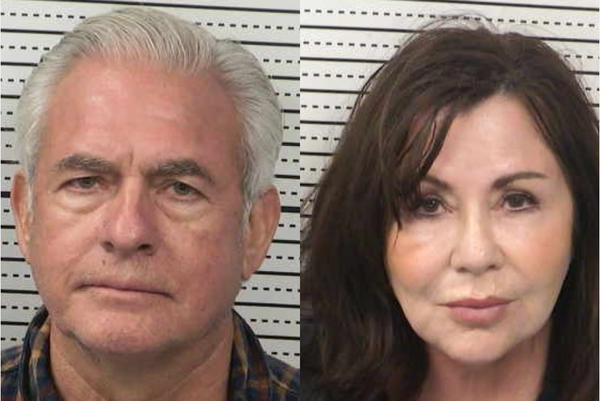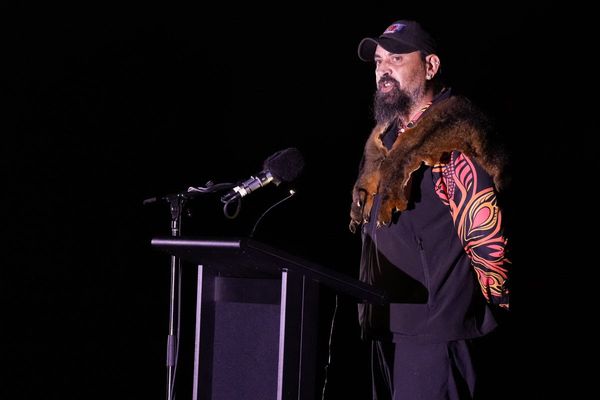
For the past 10 years, Susan has been sleeping rough. The signs show on her body – a year-old wound that refuses to heal, small cuts that won’t mend, regular arthritis flare-ups and stress lines across her face.
Even as Melbourne’s frigid weather sets in, she sleeps in alleyways and parks. But rain is forecast for the next few days, and Susan is $365 away from having a roof over her head.
Susan is one of thousands of Australians sleeping rough this winter. They shelter in tents, parks or campgrounds, shield against the wind in doorways and sleep in cars parked in secluded places. This year has been tough: parts of Australia have had record cold temperatures; ice, wind and rain have badgered the southern states – and more bad weather is forecast.
Some people migrate to Queensland in search of milder weather or ask friends if they can stay for a night. Many who stay down south get sick from the cold.
“I’m on all the lists,” Susan says, speaking about the public housing register. “I’ve been sleeping rough 10 years, off and on … This is what happens when you come from a domestic violence relationship. And you have a dog.”
Susan’s dog, Sandy, is old, arthritic and angry. The 17-year-old doesn’t like to be patted. Getting into emergency accommodation with a pet is difficult at the best of times. There is only one shelter in Victoria that will take people with pets, and it becomes impossible if your dog has behavioural issues. But Susan doesn’t want to be without her dog. Sandy keeps her alive and gives her a reason to keep going, Susan says.
If Susan can scrape together enough money from begging, she can stay in a pet-friendly motel for $150 a night or $400 a week, plus a key deposit. Otherwise, she sleeps outside.
The wind blows through Susan’s thick curly hair. It’s the kind of cold that seeps deep into your bones. She wraps her puffer around her; last week, someone stole her sleeping bag.
“I’m sitting out here with a major infection. I’ve got pneumonia. I’ve got an open wound,” she says. “My clothes are wet, my bandages are wet.
“We get treated like shit. And that’s the truth.”
Housing shortage deepens
The message from frontline organisations is the same – there are not enough beds. There is not enough funding.
At the same time, demand is growing and the demographics of who needs help is changing.
Rough sleeping and car sleeping is increasing, says Kate Colvin, the CEO of Homelessness Australia.
Colvin points to the most recent productivity report, which came out in January and showed the number of people who had gone to a homelessness service but failed to get a bed rose from 4,658 in 2021/2022 to 5,712 in 2023/24.
In 2023, 57,519 people asked for help with accommodation but were not able to get it.
“We’ve got more and more people coming to homeless services because they’re pushed out of the rental market because rents are going up,” she says. “But it’s also harder to get housing.”
She has a wish list of three things: funding for more staff, more community housing and higher jobseeker rates.
Climate change is also having an impact. A recent report from the Council to Homeless Persons found climate change was already – and will continue – to exacerbate health issues and render more Australians homeless. Some of the thousands of people affected by floods and bushfires over the past few years have not returned home, the report said.
“Increasingly, adverse weather conditions, particularly prolonged heatwaves, major fires and floods, enduring drought and rising inundation, will result in significant internal population displacements,” the report found.
Winter has delivered record cold temperatures to Australia’s southern states – three weeks ago Melbourne recorded its coldest morning in two years. There is more to come: August is expected to be wetter than average for parts of eastern and south-western Australia.
While Sydney is warming up, Daniel Nour says the health impacts of the cold are being felt in the city. Nour runs Street Side Medics, the country’s only mobile medical service for people experiencing homelessness.
Across New South Wales the service has 2,023 patients on file and sees at least 14 people a week. Last year, 685 new patients registered. When the service launched in 2020, 82 patients registered.
“I’ve certainly noticed more females and particularly females aged over 55,” Nour says.
“I’ve also noticed an increase in single mothers who may be living in their cars, or may actually still maintain a job, but because of domestic violence or the cost-of-living crisis or a lack of support they’re unable to [find] housing.”
He says the medical service sees many patients with wounds and dental infections. Patients have osteoporosis or cancers that have been untreated for years. The cold weather doesn’t just bring flu or Covid-19 – it can also trigger heart attacks. As he speaks, one of his patients is undergoing triple bypass heart surgery in a Sydney hospital. Nour says he will make it.
Loneliness and disconnection
On Thursday morning, another rough sleeper, Brigette Hansen, isn’t in her tent, which is dripping wet from the previous night’s rain.
Peninsula Health, a public health service providing healthcare to communities in Frankston and the Mornington Peninsula, told Guardian Australia that Hansen, who had torn the anterior cruciate ligament in her knee, had discharged herself at about 1am that morning. No one is sure where she slept or if she’s safe, but wherever she is, she’s likely to be in a lot of pain.
For almost three months Hansen has been living in a tent on the Mornington Peninsula, a stone’s throw from million-dollar homes that line the foreshore. She has a sleeping bag that can handle -8C temperatures and a doona that goes on top.
Before this, she had been living in a private rental with her landlord. She was on jobseeker and doing casual cleaning work. But they had a falling out, and Hansen lost her home.
“I’m scared I am going to die,” she told Guardian Australia. “It’s killing me. It’s the loneliness and the disconnection and the hate on top.”
Hansen, who has been on the public housing waitlist for a year and a half, says she has contacted four services but was told she was not in any of their catchments. She’s got nowhere else to stay except her tent or occasionally with a few friends.
Around lunchtime on Thursday, Hansen texts to say she’s back in hospital, safe, but caught in a system she says can be like being stuck in mud.
“I don’t know where to start,” she says.
Rental evictions
For eight of the 10 years Susan has been homeless, she has been coming to the Department of Families, Fairness and Housing in Melbourne and sitting across the road. She plans to keep sitting there until they find her a house.
Some of the department workers know her by name, but one told her to move on. She has not had a housing offer; she is not on the priority list. But she is resolute. She will stay until she gets a home.
There are similar stories elsewhere. For six months, Tasmanian Katherine Cook lived in her van. When she got so sick with a severe cold that would not clear up, she had to ask friends to stay at their places.
“It was getting too cold. I got crook, so I’ve been couch surfing,” she says.
Six months ago Cook was evicted from her private rental. For years, there was an issue with the sewerage pipes. After she got the council involved she was issued with a “no-grounds” eviction – she believes it was retaliatory and has lodged a case with the tenants’ union.
She was working as a casual cleaner, but most of the work was through her agency so when she lost her house, she lost her job.
Cook paid $360 a week in rent. After she was evicted the property went back on the market for $480.
Because of her pet dog, she can’t stay at the women’s shelter in Launceston, although this winter a few charities have given her vouchers for petrol and food.
“I have days where you just want to cry.”
After five years on the public housing list, Cook was told by her case manager last week that she would soon have a home.
This house will change her life, Cook says. She will be able to start working again and her daughter, who is staying with friends and about to start year 11, will be able to live with her. Secure housing should also mean she won’t be as sick as she has been while living rough.
Like thousands of others, Cook is waiting for a call. This time, it will be to tell her her home is ready.







